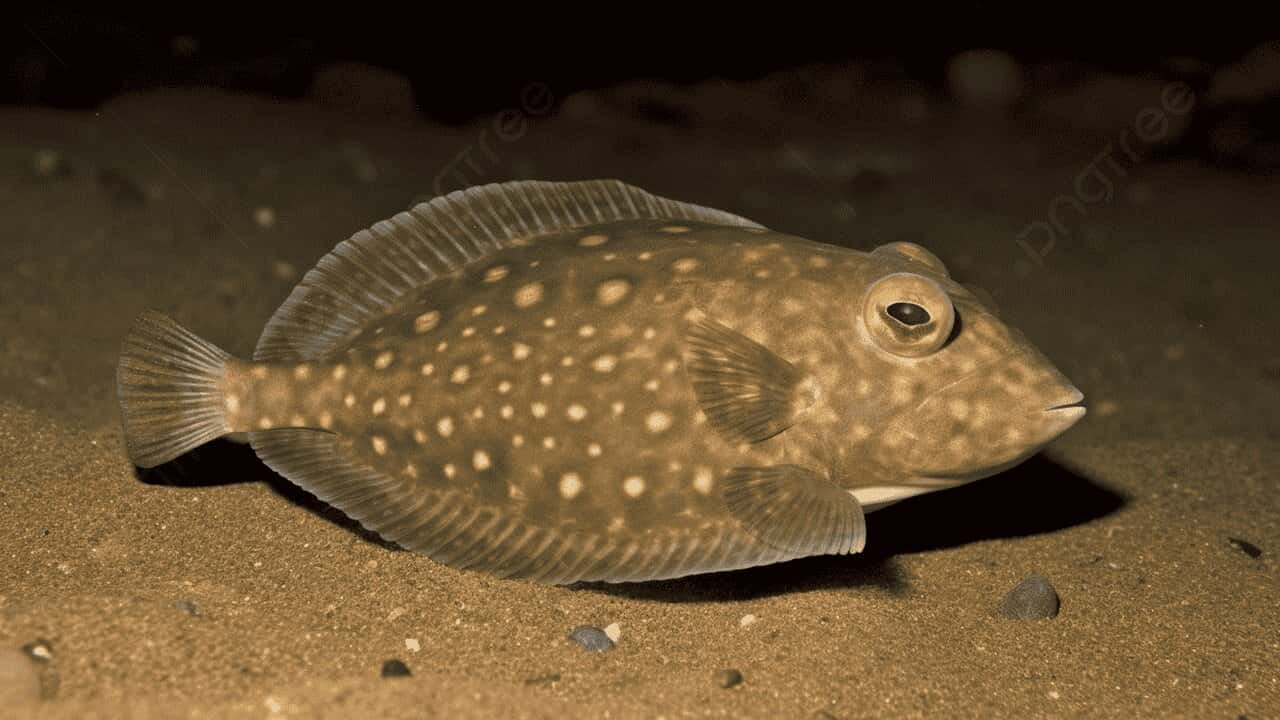Curious about can you catch flounder at night? Yes, you can catch flounder at night. Flounders are known to be more active at night, making it an excellent time to catch them.
Fishing for flounder at night can be a rewarding experience as their feeding patterns change, and they become more active, often coming closer to shore. The darkness also provides an advantage for anglers, as flounder are more accessible to locate and catch during this time.
However, it’s essential to use proper night fishing equipment and techniques to ensure safety and maximize your chances of catching flounder. Flounder fishing at night can give anglers a unique and exciting experience, allowing them to connect with nature differently.
Whether you’re a seasoned angler or a novice, trying your hand at catching flounder at night can add a new dimension to your fishing adventures.
What do flounders do at night?
Flounder, like many other fish, exhibit different behaviours during the day and night.
While specific behaviours can vary based on the species and environmental factors, here are some general aspects of what flounder might do at night:
- Feeding: Flounders are typically nocturnal feeders. At night, they become more active in searching for prey, such as small fish, crustaceans, and other bottom-dwelling organisms. Their flat bodies and ability to change colour help them blend into the substrate as they wait to ambush passing prey.
- Increased Activity: Flounder may be more active during the night compared to the daytime. This increased activity is often linked to feeding behaviours and the advantage of low-light conditions for ambushing prey.
- Movement: Flounder may move from deeper waters to shallower areas at night to take advantage of the darkness for hunting. They often use their pectoral fins to “walk” along the seafloor, and their eyes are adapted to low-light conditions.
- Camouflage: Flounder are known for their remarkable ability to change color and texture to match their surroundings. This camouflage becomes especially useful at night as they navigate and hunt in the dimly lit environment.
- Shelter: Like many fish, flounder may seek shelter in the substrate, such as sand or mud, at night. They can bury themselves partially in the sediment to hide from predators and wait for prey to come within striking distance.
It’s essential to note that these behaviours can vary based on the flounder species and their habitat’s specific environmental conditions.
Additionally, individual flounder may adapt their behaviour based on factors such as tide, water temperature, and prey availability.
The nocturnal feeding habits of flounder make them a popular target for anglers who choose to fish for them during nighttime hours.
Can You Catch Flounder at Night?
Yes, catching flounder at night is a common and often successful fishing practice. Flounders are known to be nocturnal feeders, meaning they are more active and likely to feed during nighttime.
Best Techniques For Nighttime Flounder Fishing
When it comes to nighttime flounder fishing, employing the best techniques can make a substantial difference in your success on the water. From selecting the right bait to understanding tides and currents, several factors must be considered for a fruitful flounder fishing excursion.
Let’s look at some of the best techniques for nighttime flounder fishing.
Choosing The Right Bait
Selecting the appropriate bait is crucial for enticing flounder during nighttime fishing expeditions. Live bait such as mud minnows, mullet, or shrimp often produce significant results.
These baits can be rigged on a fluorocarbon leader with a lightweight jig head, allowing for a natural presentation. Using scented soft plastics like gulps or fish bites can also attract flounder in low-light conditions.
Using Specialized Equipment And Tackle
The right equipment and tackle is essential for enhancing your nighttime flounder fishing experience.
Utilize a sensitive rod with a light tip to detect subtle flounder bites. Pair this with a high-quality spinning reel spooled with 10-20 lb braided line for increased sensitivity and better hook sets.
In addition, incorporating a flounder gig or light to spot and target flounder in the darkness can significantly improve your chances of success.
Understanding Tides And Currents For Optimal Fishing Spots
Comprehending the impact of tides and currents is imperative for identifying optimal fishing locations for flounder. During nighttime, flounder tend to congregate in areas with deeper channels, structures, and ambush points.
Targeting these locations during the incoming tide can be particularly productive, as flounder often move closer to the shoreline to feed. Paying attention to the water movement and identifying eddies and drop-offs can lead to fruitful fishing spots.
Mastering Nighttime Flounder Catching
Mastering the art of nighttime flounder catching can be a gratifying experience for any angler when it comes to fishing for flounder at night. The darkness adds an element of challenge and excitement, making the catch all the more rewarding.
Whether you’re a seasoned angler or new to night fishing, understanding the techniques and strategies can significantly improve your chances of landing a sizable flounder.
Here, I explore the essential methods and tips for successful nighttime flounder catching, allowing you to maximize your fishing ventures after the sun sets.
Using Artificial Light To Attract Flounder
Utilizing artificial light is a crucial aspect of successful nighttime flounder catching. Underwater lights can attract plankton and smaller baitfish, which draw flounder closer. When positioning your lights, ensure they are placed strategically to illuminate the water without frightening the flounder.
Selecting the right colour for your light can also make a difference, as green lights are known to be effective for attracting flounder. Incorporating artificial light into your nighttime fishing setup can significantly enhance your chances of encountering floundering in the dark waters.
Effective Casting And Retrieval Techniques In Low Light Conditions
Casting and retrieving baits in low light conditions require specific techniques to increase your chances of a successful flounder catch. Utilize a longer rod for casting to cover a wider area and maintain a safe distance from the light source.
Employing fluorocarbon leader can aid in presenting your bait naturally while also providing abrasion resistance. Implement a slow and steady retrieve, allowing your bait to glide along the bottom, mimicking natural movement.
Pay close attention to your line for any subtle movements, as flounder tend to strike their prey with precision. By mastering effective casting and retrieval techniques tailored to low light situations, you can elevate your night fishing game.
Patience And Persistence In Night Fishing
When engaging in nighttime flounder catching, patience and persistence are paramount. Flounder are stealthy predators, often requiring a keen eye and steady hand to detect their presence.
Maintain a calm and focused demeanor, and be prepared to invest time in waiting for the right moment. It’s crucial to understand that successful night fishing for flounder may not always yield immediate results, but the potential for an exceptional catch makes the pursuit worthwhile.
By exercising patience and remaining persistent throughout your night fishing endeavors, you can increase your chances of encountering and landing flounder under cover of darkness.
Safety Considerations For Night Fishing
Night fishing for flounder can be an exhilarating experience, but it’s crucial to prioritize safety when venturing out after dark.
The limited visibility and potential hazards of night fishing require anglers to take extra precautions and have the right safety gear in place.
Essential Safety Gear And Precautions
Before heading out for a night fishing expedition, ensuring you have the essential safety gear is crucial. This includes:
- Personal Flotation Device (PFD): Always wear a PFD, especially when fishing from a boat, kayak, or any other watercraft. Opt for a PFD equipped with reflective patches for added visibility.
- Headlamp or Waterproof Flashlight: A reliable light source is essential for navigating the fishing spot, handling gear, and attending to any emergencies.
- First Aid Kit: Carry a well-equipped kit that includes items for treating minor injuries and addressing any unforeseen accidents.
- Whistle or Sound Signaling Device: In case of emergencies, a whistle or sound signalling device can attract attention and aid in calling for help.
- Communication Device: Ensure you have a fully charged mobile phone or radio for contacting emergency services or seeking assistance if needed.
Navigation And Staying Aware Of Surroundings In The Dark
When fishing at night, maintaining awareness of your surroundings is critical. Here are some tips for navigating and staying safe in the dark:
- Use GPS or Chartplotter: Leverage technology to aid in navigation and keep track of your position, especially in unfamiliar waters.
- Anchor Lighting: Ensure your boat or kayak has the required anchor lights to stay visible to other vessels in the area.
- Slow and Steady Movement: Move cautiously, especially when navigating through shallow or rocky areas to avoid collisions or grounding.
- Stay Oriented: Periodically check your bearings and stay aware of any changes in the wind, tide, or currents to prevent disorientation.
Tips For Handling Catches Safely At Night
After successfully catching a flounder at night, it’s essential to handle the catch safely. Follow these tips to ensure proper handling and release:
- Use a Landing Net: Safely land the flounder using a landing net to avoid injuring the fish or yourself during retrieval.
- Handle with Care: Exercise caution when handling the flounder to avoid any accidental hook injuries and ensure a successful release back into the water.
- Bring Proper Tools: Have pliers or a dehooking tool readily available to facilitate the quick and safe removal of hooks from the flounder.
- Swift Release: Minimize the time the flounder spends out of water and release it gently back into its natural habitat, allowing it to swim away healthy and unharmed
Tips For Consistent Success
When it comes to nighttime flounder fishing, consistency is key to success. With the right strategies and techniques, anglers can increase their chances of consistently catching flounder during nighttime.
Using a fishing journal, learning from trial and error experiences, and building expertise, anglers can improve their nighttime flounder fishing skills.
Here are some essential tips for consistent success:
Keeping A Fishing Journal For Tracking Nighttime Catches
One of the most effective ways to improve your nighttime flounder fishing success is by keeping a detailed fishing journal. This lets you track important details such as the time of day, weather conditions, bait used, and specific locations.
By recording these details consistently, patterns and trends can be identified, which can be used to optimize future fishing outings.
Learning From Trial And Error Experiences
Learning from trial and error experiences is essential to becoming a successful nighttime flounder angler.
By experimenting with different bait, lures, and fishing techniques, anglers can gain valuable insights into what works best in different conditions.
It’s essential to take note of both successful and unsuccessful attempts, as this can provide valuable information for refining your approach.
Advice For Building Experience And Expertise In Nighttime Flounder Fishing
Building experience and expertise in nighttime flounder fishing takes time and dedication.
One of the best advice is to spend as much time on the water as possible. This allows you to understand the behavior and feeding patterns of flounder during the nighttime hours.
Additionally, networking with experienced anglers and seeking mentorship can provide valuable insights and tips for honing your nighttime flounder fishing skills.
Frequently Asked Questions On Can You Catch Flounder At Night
Can Flounder Be Caught At Night?
Yes, flounder can be caught at night, especially during the high tides when they move closer to the shore. They are nocturnal feeders and tend to be more active during the darkness.
What Type Of Bait Is Best For Night Fishing Flounder?
Using live bait such as minnows, shrimp, or small fish is ideal for night fishing for flounder. Artificial lures that mimic the movement of these natural baits can also be effective.
Are There Specific Areas Where Flounder Can Be Found At Night?
Flounder can be found in shallow waters near structures such as docks, piers, and bridges at night. They are often attracted to areas with sandy or muddy bottoms where they can camouflage and hunt for prey.
Conclusion
To sum up, fishing for flounder at night can be very rewarding. By using the right techniques and gear, you can increase your chances of a successful catch.
Remember to be mindful of safety and regulations when fishing in the dark. You can have a memorable night of flounder fishing with patience and persistence.


